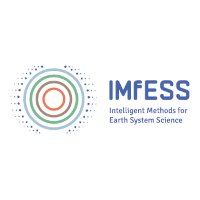Establishing a modelling framework for agent-based models
Prof. Dr. Christina Bogner with Marijn van der Meij, Tim Reichenau, Andreas Bolten, Tony Reimann, Georg Bareth, Karl Schneider, and Karl Kemper
Idea
Agent-based models (ABMs) are known as a tool to model interactions between human agents in economics (Farmer and Foley, 2009) or social sciences (Bankes, 2002) or human-environment interactions (An, 2012). It is one of the methods to approach complex systems. Some even call them “a bridge between disciplines”‘ (Axelrod, 2006). ABMs are related to game theory; however, they can encompass more complex behaviour. Given their power to approach complex systems, we feel that ABMs should be part of the KPA’s repertoire of models to help answering pertinent questions relating to human-environment interactions within the Earth System Sciences. Eventually, ABMs could even be a link between the KPAs “Social and Economic Behavior” and “Intelligent Methods for Earth System Sciences”. ABMs require a thorough implementation to run at a reasonable speed. The (relatively) new language for data analysis, Julia (https://julialang.org/), promises such a framework for a successful implementation (https://github.com/juliadynamics/Agents.jl/). Thus, we suggest trying Julia’s capacity to provide a framework to implement ABMs. As a case study, we will use the research questions arising in the project A05 “Future roads” in the CRC 228 related to land-use change and development of a road network.
References
- Farmer, J. D. and D. Foley (Aug. 2009). “The Economy Needs Agent-Based Modelling”. In: Nature 460.7256, pp. 685–686. issn: 1476-4687. doi: 10.1038/460685a. (Visited on 04/17/2023).
- Bankes, S. C. (May 2002). “Agent-Based Modeling: A Revolution?” In: Proceedings of the National Academy of Sciences 99.suppl 3, pp. 7199–7200. doi: 10.1073/pnas.072081299. (Visited on 04/17/2023).
- An, L. (Mar. 2012). “Modeling Human Decisions in Coupled Human and Natural Systems: Review of Agent-Based Models”. In: Ecological Modelling. Modeling Human Decisions 229, pp. 25–36. issn: 0304-3800. doi: 10.1016/j.ecolmodel.2011.07.010. (Visited on 04/17/2023).
- Axelrod, R. (Jan. 2006). “Chapter 33 Agent-based Modeling as a Bridge Between Disciplines”. In: Handbook of Computational Economics. Ed. by L. Tesfatsion and K. L. Judd. Vol. 2. Elsevier, pp. 1565–1584. doi: 10.1016/S1574-0021(05)02033-2. (Visited on 04/17/2023).
Interim Report
Technical Achievements:
A complex model that simulates the spread of the invasive species Prosopis in Kenya was developed. The model is driven by intricate interactions between landscape variables, meteorological factors, human-made infrastructure, and the ecological niche and dispersal strategies of Prosopis.
Community Achievements:
To achieve the goal of establishing the model, we gathered expertise from various fields. To gain local expertise and relevant data, we are collaborating with Purity Rima Mbaabu and the Woody Weeds project. For model development expertise, we are establishing a close relationship with Prof. Wolfram Barfuß (University of Bonn).
Educational Achievements:
Several Master’s theses are currently being developed in close connection with the model development:
- One focusing on the street network in Baringo.
- One focusing on suitability mapping of Prosopis, which could enhance the agent-based model (ABM).
A three-day workshop on high-performance computing in Julia was attended to gain the expertise needed to use the computational power of the CHEOPS high-performance computing cluster at the University of Cologne (UzK).
Next Steps
- Finalize the model calibration pipeline.
- Run the model on the HPC cluster at the University of Cologne (UzK) to optimize parameters and evaluate the model's performance.
- Depending on the results: include more data or fine-tune model functions.
- Couple the ABM with a Maxent suitability map.
- Use the model to answer research questions, such as: What role do streets play in the Prosopis invasion?
